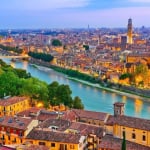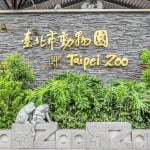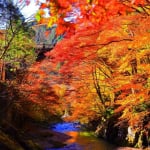Name: Taishakukyo
Address: Nagano, Kamishikigun, Jinsekikogen-cho, Hiroshima Prefecture
Official/Related Website URL: http://taishakukyo.com/
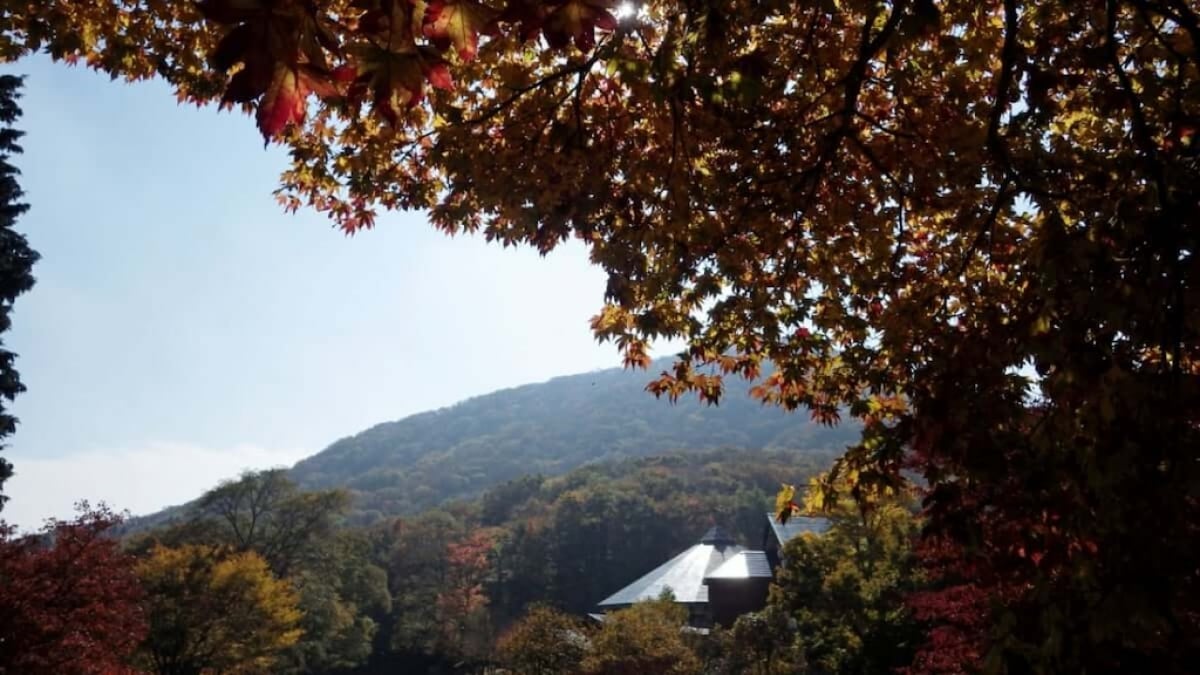
12 Recommended Tourist Spots in Shobara City, Hiroshima – A Nature & History-Rich Journey
Located almost in the center of the Chugoku region, Shobara City is known as the most extensive city in Hiroshima Prefecture. In winter, it becomes a heavy-snow area, with snowfall often exceeding 100 cm in the northern part. Shobara City is also famous for its high-quality wax stone, kaorinite, and limestone harvested on Katsumitsu-yama — among the finest in Japan. In addition, Shobara City is a thriving agricultural region.
Ancient myths and legends still echo here, and it is well known as a power spot. With an abundance of tourist attractions, many people visit Shobara City every year. During the New Year festivities, there is even a local custom of eating shark—a rare culinary experience found only here. The city also boasts unique local specialties such as “Donguri Korokoro Buta” (acorn-rolling pig) developed by Hiroshima University and “Nyūdango” (milk dumplings), among other unusual foods.
With its rich culture and abundant nature, Shobara City is a truly enchanting town that you should visit to experience it for yourself. Its beech trees, officially designated as the city tree, are among Japan’s most treasured natural monuments. Shobara City also offers local sake for adults to enjoy. Below are 12 must-see tourist spots in Shobara City that you simply must explore. They are all incredibly captivating—you’ll be sure to fall in love with Shobara City.
table of contents
[x] close
12 Recommended Tourist Spots in Shobara City, Hiroshima – A Nature & History-Rich Journey
- 1. Majestic Nature at “Taishakukyo”
- 2. The Colorful Floral Paradise at “Bihoku Kyoritsu Park”
- 3. Mount Azuma – A Beginner’s Climb
- 4. Hibayama Goryo – The Legendary Tomb on a Mythical Stage
- 5. Also Recommended: Dogo-yama
- 6. Shobara Roadside Station “Taka-no”
- 7. Hiwa Natural Science Museum
- 8. The Mystical “Kumano Shrine & Ancient Cedar”
- 9. Feel the Stamped History at “Sangakusou”
- 10. Haunted Legends Live on at “Tokunji”
- 11. Winter Wonderland at “Keimuyama”
- 12. Enjoying the Outdoors at “Kenmin no Mori”
- ◎ Summary
1. Majestic Nature at “Taishakukyo”

Taishakukyo, renowned throughout Hiroshima for its autumn foliage, is busy with tourists not only in autumn but throughout the year. With numerous sightseeing stops along an 18 km route, it cannot be fully explored in just one day.
The first highlight is “Hakuun-do” – a must-see stalactite cave with a depth of around 200 m, beautifully preserved. The second highlight is “Danyu-kei,” known for its rapid mountain stream flow. Its speed is so intense that even koi carp wouldn’t manage to swim upstream! The surrounding greenery makes the scene extremely photogenic. The third highlight is “Yubashi,” Japan’s representative gigantic natural bridge with a total length of 90 m, a width of 18 m, and a height of 40 m. Its majestic appearance has earned it the nickname “Shinbashi” (Divine Bridge) among locals who pay their respects to it.
Additionally, there are many other unusual rock formations at Taishakukyo, such as “Oni no Kuyō-tō” (Oni Memorial Tower), “Oni no Tōmon” (Oni Gate), “Sekimen Kokuji” (Stone Inscription), and “Tarō Iwa” (Tarō Rock). There are even hands-on leisure experiences in this nature-rich area. During autumn, the crowds peak, so it is recommended to arrive early in the morning.
2. The Colorful Floral Paradise at “Bihoku Kyoritsu Park”
Bihoku Kyoritsu Park offers a breathtaking view of colorful flowers. As the first national park established in the Chugoku region, it was created based on various thematic concepts. In Shobara City, it ranks as the top tourist attraction for its overwhelming charm. Within the park, you’ll find nostalgic “Furusato” zones, a flower plaza, a lawn park, and a Nordic-inspired auto camp area where you can spend a fun-filled day.
From April to May in spring, vast fields of tulips burst forth, accompanied by violas and cherry blossoms, and in summer sunflowers are in full bloom. The park also features the “Daisensu Fantasy” — said to be one of the largest displays of daffodils in Japan — where flowers carpet the area like a luxurious tapestry. Seasonal recreational programs are offered as well; during the Christmas season, special illumination, fireworks, Christmas trees, and concerts are held. There is also a playground area known as “Kyū no Oka” with more than 40 types of large-scale play equipment.
At the “Kabutomushi Dome”—designed to resemble a giant insect cage—visitors can touch and observe actual rhinoceros beetles and stag beetles. This facility is a hit with children. Shobara is a place where families can have a wonderful time exploring traditional rural life and participating in experiences like soba making, straw craft, pottery, and knife making. With ample parking available, there is no worry about finding a spot even during peak seasons. Make unforgettable memories in the majestic countryside.
Name: Bihoku Kyoritsu Park
Address: 4-10, Mikkaichi-cho, Shobara City, Hiroshima Prefecture
Official/Related Website URL: http://www.bihoku-park.go.jp/
3. Mount Azuma – A Beginner’s Climb
Legend has it that Izanagi-no-Mikoto once called out “Ah, my wife!” from Mount Azuma when addressing Izanami-no-Mikoto enshrined on Hibayama. Mount Azuma is highly recommended for those new to mountain climbing.
At Mount Azuma, you can encounter rare natural plants. This mountain allows you to enjoy the vivid colors of nature from the fresh greens of spring to the first snows of late autumn. Near the high part, from a lodge you can depart and explore a vast highland.
A round trip from the lodge takes about 70 minutes, making it easy for anyone to enjoy a mountain hike. There are also campsites and rental cottages available for those who wish to relax and fully appreciate the beauty of nature. At the summit, you’ll be rewarded with an unparalleled panoramic view. Visiting in May during the fresh green season is especially recommended as the climate is stable.
While Shobara City has other mountains, Mount Azuma is the most popular with families. If you’re looking to enjoy a family hike, this is the place to be. During the autumn foliage season, the colorful trees create an unforgettable scenery.
Name: Mount Azuma
Address: Shobara City, Hiroshima Prefecture / Okuizumo Town, Nita-gun, Shimane Prefecture
Official/Related Website URL: http://www.qkamura.or.jp/azuma/
4. Hibayama Goryo – The Legendary Tomb on a Mythical Stage
Hibayama Goryo is a mountain with an abundance of hiking courses. Part of the route is accessible by car, so even those who are not very fit can enjoy a hike. After parking your car, the trail is about 2.5 km long and is well maintained on an ordinary road, so there’s no worry about getting lost.
At the summit of Hibayama stands the "Goryo"—an ancient burial mound associated with Izanami-no-Mikoto from the Kojiki. This sacred burial mound has been revered as a power spot, attracting numerous visitors. Surrounding the area are giant trees, such as the locally designated natural monuments beech and large tochi trees, which evoke the power of nature and history at a glance.
Once you reach the summit, an unbeatable panoramic view unfolds, providing a profound sense of achievement. Along the trail to the summit and throughout the Hibayama Mountain Range, there are various rocks named after locales mentioned in the Kojiki. Observing these intriguing rocks as you walk makes for an incredibly interesting experience.
Name: Hibayama Goryo
Address: Kumano, Nishijo-cho, Shobara City, Hiroshima Prefecture
Official/Related Website URL: http://www.yamakei-online.com/yamanavi/yama.php?yama_id=842
5. Also Recommended: Dogo-yama
Located within the Dogo-yama Imperial Taishaku National Park, Dogo-yama is highly recommended for family-oriented mountain hiking. On its western side stands the somewhat higher Iwaoke-yama (1271 m); combining hikes to both peaks is an excellent experience. From the summit, you can gaze west toward the Hibayama Range, northeast toward Ōyama and the Sea of Japan, and on clear days, the view can even extend to the Shimane Peninsula. Dogo-yama is also one of Japan’s 300 famous mountains, sitting on the border with Tottori Prefecture, making it a truly breathtaking sight. Rare plants can also be observed here.
Dogo-yama is located in the headwaters of the “Naruga River,” a tributary of the Takahashi River; its clear waters and well-maintained trails make it accessible even for elderly hikers.
Name: Dogo-yama
Address: Konuka, Higashijo-cho, Shobara City, Hiroshima Prefecture
Official/Related Website URL: http://dogoyama.jp/
6. Shobara Roadside Station “Taka-no”
The roadside station “Taka-no” is beloved by locals. It is a very beautiful rest area that offers many rare local food ingredients that you won’t find anywhere else. Fresh vegetables, fruits, and even soft-shelled turtle (suppon) are sold here. Their sweet apple juice, which brings out the natural flavors of the apples, is a must-try. Use it as a rest stop to uncover new discoveries.
Name: Roadside Station “Taka-no”
Address: 49 Shimogonda, Takano-cho, Shobara City, Hiroshima Prefecture
Official/Related Website URL: http://www.takanoyama.jp/
7. Hiwa Natural Science Museum
The Hiwa Natural Science Museum is one of Shobara City’s representative attractions, famous for its whale fossil exhibits. It presents the nature, geography, and history of the Chugoku Mountains.
Due to the large number of mole specimens, it is also known as the “Mole Museum.” Despite being the smallest museum in Japan, it displays over 250,000 items, including small mammal sections for moles and mice; sections on medium-to-large mammals such as foxes and Asiatic black bears; a bird section focusing on the Chugoku Mountains; a freshwater bivalve section; and insect sections featuring butterflies and stag beetles. Weekend events are frequently held, making it a great spot for families.
Name: Hiwa Natural Science Museum
Address: 1119-1 Hiwa-cho, Hiwa, Shobara City, Hiroshima Prefecture
Official/Related Website URL: http://shobara-info.com/245
8. The Mystical “Kumano Shrine & Ancient Cedar”
Hibayama is revered as a sacred mountain with a long tradition of worship. At the southern foothills of the mountain lies Kumano Shrine, founded in 713. It is famous for over 100 giant cedars, some of which are over a thousand years old. Eleven of these cedars have been designated as natural monuments by Hiroshima Prefecture.
Some cedars have trunks exceeding 8 meters, and dozens of these mighty trees tower skyward, guarding the shrine. During the annual festival held on April 29, the paths once used for training become lively, so be sure to visit. As you follow the cedar-lined path to the main hall, you’ll experience a serene, almost otherworldly atmosphere. Behind the shrine, you can also see Tori-o Falls.
Name: Kumano Shrine & Ancient Cedar
Address: 116 Kumano, Nishijo-cho, Shobara City, Hiroshima Prefecture
Official/Related Website URL: http://www.shobara-info.com/spot/226
9. Feel the Stamped History at “Sangakusou”
“Sangakusou” is a traditional townhouse built using an unusual method known as “hattōzō” construction. It features a low-entry hip-and-gable style with overlapping hip roofs covering the entire structure—a unique piece of traditional architecture that would be impossible to replicate today, and is said to be one of the most valuable townhouses in existence.
Originally established by the Hoazawa family, who had been engaged in soy sauce manufacturing, Sangakusou was converted to a ryokan in Showa 24. The meticulous craftsmanship reveals many outstanding features in the main building, earthen-floored hall, annex, large reception room, and second floor.
The elegant flower-shaped window in the annex exudes refined beauty with its traditional atmosphere. As you explore the various sections, you can truly feel the high quality of its construction—a rare sight indeed.
Name: Sangakusou
Address: 345-1 Higashijo, Shobara City, Hiroshima Prefecture
Official/Related Website URL: http://shobara-info.com/232
10. Haunted Legends Live on at “Tokunji”
Tokunji is a famous temple founded in Bun'an 3 (1446) by Kakuzenzanji. It is renowned for the statue of the Holy Kannon and is the 22nd stop on the "33 Kannon Pilgrimage of Bigo West Country." Legend has it that a man-eating demon once resided here and was later reformed by a traveler who had the demon break off its own horn as a vow to cease its evil ways.
Tokunji is renowned for its spectacular autumn foliage, attracting many visitors from late October to early November. In the tranquility of the temple grounds, you can feel the power of Shobara City’s history and nature. Also, the tomb of the famed Sengoku-era warrior Yamanaka Shikusuke is located here, making it an essential visit for history enthusiasts.
Name: Tokunji
Address: 751 Sugata, Higashijo, Shobara City, Hiroshima Prefecture
Official/Related Website URL: https://yaokami.jp/1346311/
11. Winter Wonderland at “Keimuyama”
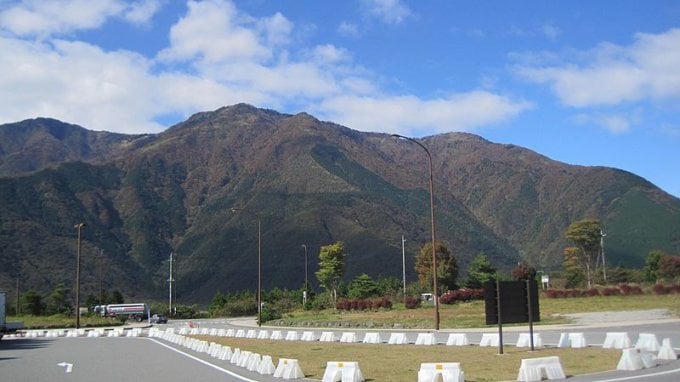
Covering an expansive 70 hectares, Keimuyama is a standard tourist spot in Shobara City known as a power spot. In winter, snow blankets the area, and in summer the cool, refreshing new greens make it a popular destination to escape the heat. In the foreground, the Keimuyama Lucky Ranch is active from May to October, where Wagyu and dairy cattle are grazed. Gourmet dishes made from Jersey cattle are particularly renowned, especially the rich, popular soft serve ice cream.
The majestic mountain is breathtakingly beautiful and healing just by being in its sight. Despite its name, “Keimuyama” is surrounded by dense vegetation—a mystery in itself. During autumn, the foliage turns red and orange, creating a spectacular scene.
Name: Keimuyama
Address: Takano-cho, Shobara City, Hiroshima Prefecture
Official/Related Website URL: http://sancyou.com/vkenashioo.html
12. Enjoying the Outdoors at “Kenmin no Mori”
For outdoor enthusiasts in Shobara City, “Kenmin no Mori” is the place to be. It offers opportunities for mountain climbing, camping, and even skiing in winter. With on-site lodging and delicious local gourmet options available, you can also enjoy seasonal delicacies.
The campground is well-equipped with permanent tents (5 barrier-free sites), tent sites, cooking areas, flush toilets, and a campfire area, making it ideal even for beginners. The ski resort features various courses: the “Momiji Course” for beginners, the “Kaede Course” for intermediate skiers, and the “Mizunara Course” and “Buna Course” for advanced skiers. Equipment rental is available, too.
Name: Kenmin no Mori
Address: Nishijo, Aburiki, Kumano, Shobara City, Hiroshima Prefecture
Official/Related Website URL: http://www.kenmori.jp/
◎ Summary
How did you find our introduction to the 12 recommended tourist spots in Shobara City? Shobara offers abundant mountains and natural beauty with breathtaking vistas. Its proximity to Shimane Prefecture also allows you to enjoy the atmospheres of both Hiroshima and Shimane.
RELATED ARTICLES
REGIONS
CATEGORIES
FEATURED ON Shimane
-

Recommended Spots Around Lake Shinji in Shimane – From Sightseeing Boats to Local Gourmet
-
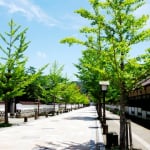
“Little Kyoto of San’in” – 5 Tourist Spots to Enjoy History and Culture in Tsuwano Town, Shimane Prefecture
-
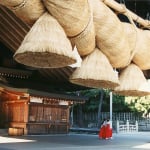
If you’re a couple looking to tie the knot, this is the place to be! Here are 5 date spots in Shimane that will help you forge lasting bonds.
-
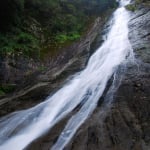
If You’re Visiting Gōtsu City in Shimane Prefecture, Don’t Miss These! 7 Recommended Sightseeing Spots in Gōtsu City
-

Highlights of the Izumo Aquarium “Shimane Prefectural Lake Shinji Nature Museum Gobius” and Nearby Tourist Attractions
MOST POPULAR ON Shimane
-
 1
1Doha: Must-see Attractions in the Capital of Qatar
-
 2
2Toronto: 10 Things to do in this Picturesque Canadian City
-
 3
3Amarillo: A City Famous for It’s Amazing Canyons, Great History and Music
-
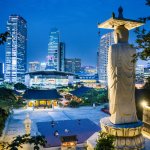 4
4South Korea: Dazzling Scenery, Rich Culture and Fascinating History
-
 5
5Kuwait: A Country in Middle East Asia Famous for Hot Sand Dunes and Stunning Cityscape


